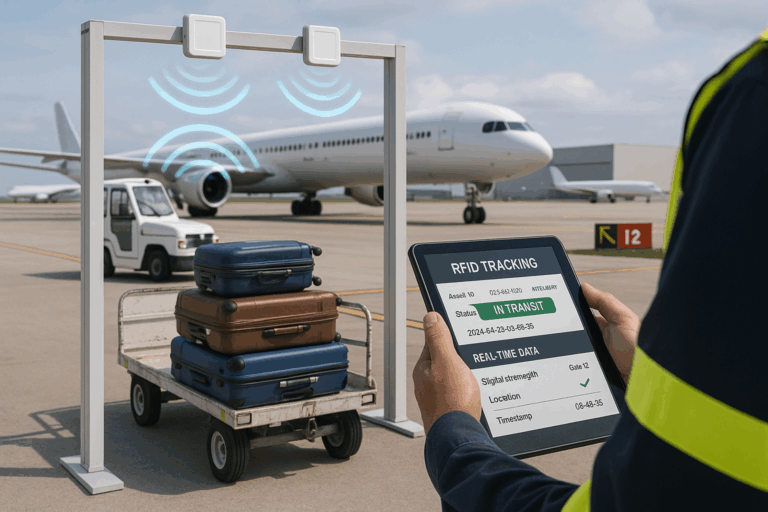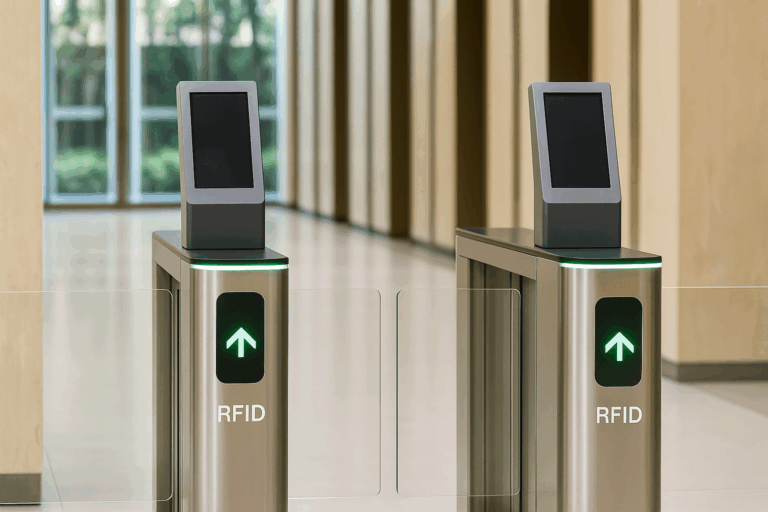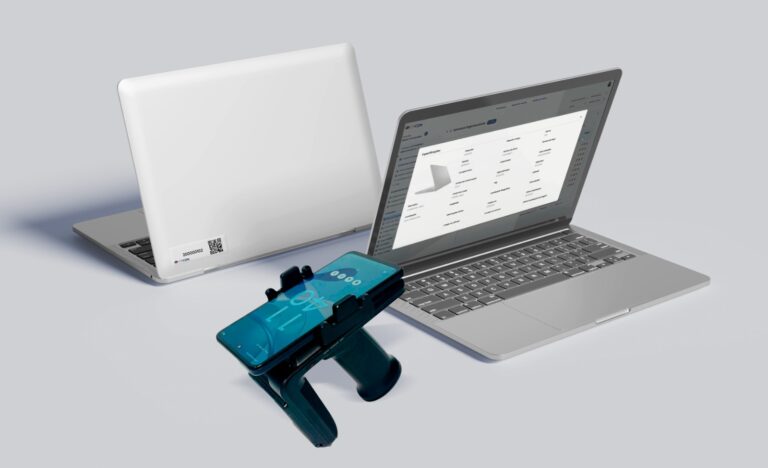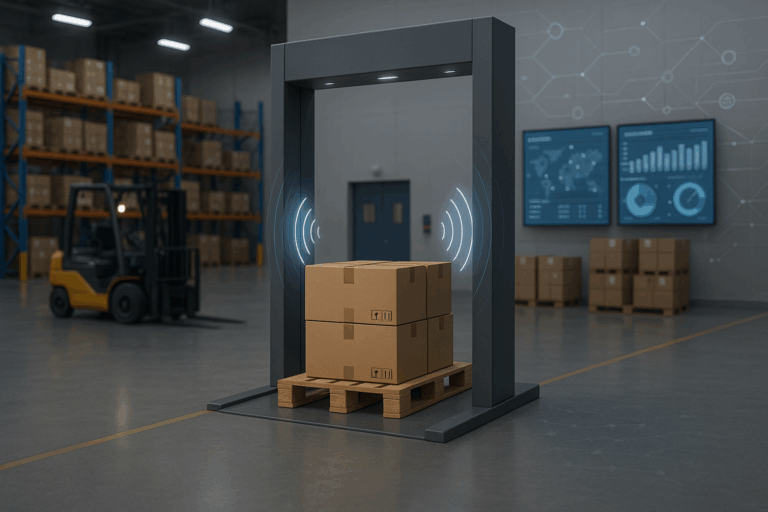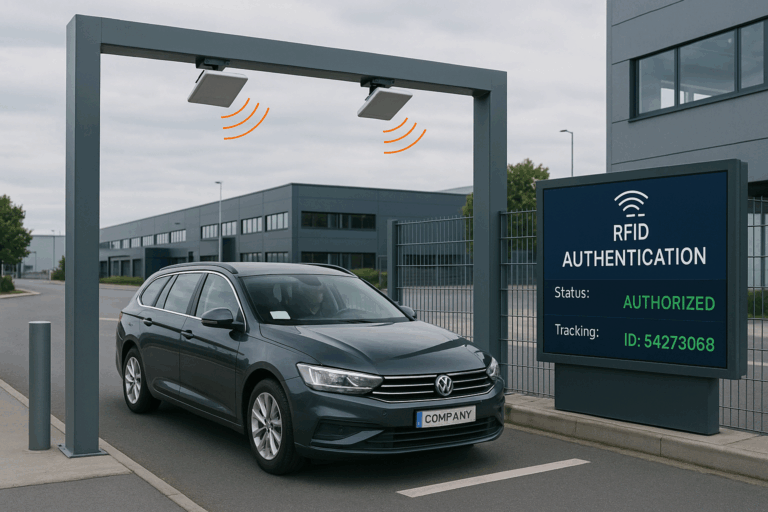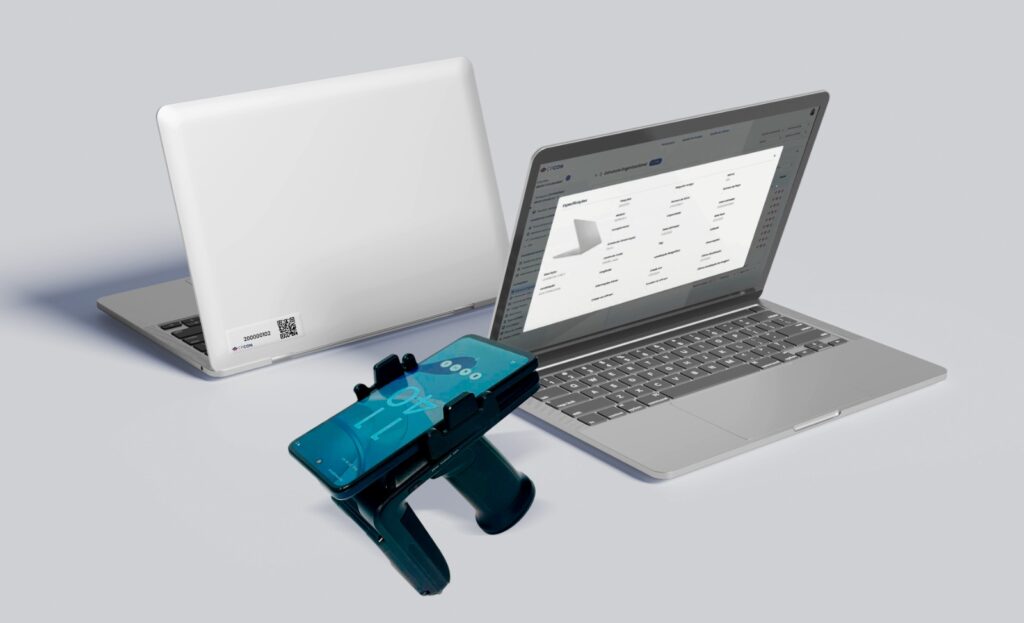RFID portals are an essential technology for airports aiming to improve operational efficiency, enhance baggage handling security, and gain real-time asset visibility. By automating the reading process without physical contact, RFID significantly reduces losses, prevents misrouting, and eliminates manual errors in logistics operations. The system records every movement of luggage and cargo, seamlessly integrating with existing airport systems.
There are different types of RFID portals — fixed, discrete, floor-mounted, and overhead — all adaptable to the terminal’s physical structure. More than a control tool, RFID is a core element in the airport’s digital transformation, enabling smart automation, data-driven decision-making, and faster response times.
Between 2021 and 2024, over 7 million pieces of luggage were mishandled by airlines in the United States — a staggering number that highlights a critical gap in airport logistics. The solution lies in strategic automation: by installing RFID portals at critical control points, such as conveyors and inspection areas, each item can be accurately tracked while reducing human intervention.
Adopting RFID portals aligns directly with the demand for smart airports — where real-time data, system integration, and regulatory compliance come together to ensure efficiency, security, and user satisfaction. In addition, this technology helps reduce expenses related to compensation, legal claims, and operational rework.
In this article, you will learn:
- What an RFID portal is and how it operates in airport environments
- The key benefits of the technology for baggage, cargo, and mobile assets
- Why RFID is a must-have for airlines seeking to minimize losses and maximize efficiency
- How CPCON Group transforms innovation into real competitive advantage through tailored projects and real-time tracking solutions

Table of Contents
ToggleWhat is an RFID portal, and why do airports need this technology?
An RFID portal is a structure equipped with readers and antennas that automatically identifies baggage and other assets as they pass through control points — without any physical contact.
In high-traffic environments like airports, it becomes a critical pillar for ensuring real-time tracking, logistical flow, and data accuracy. This technology replaces manual, error-prone steps — such as barcode scanning or visual checks — with an automated system that can read hundreds of items simultaneously, even while in motion.
The result is a safer, faster, and more reliable operation — with audit-ready data and seamless integration with systems like ERP, WMS, or custom airport control platforms.
The need for RFID portals goes beyond operational efficiency. It’s a direct response to a long-standing issue in global aviation: the mishandling and tampering of luggage.
Real cases — like that of influencer Jhenny Keller, whose suitcase was tampered with during her flight from Johannesburg to São Paulo — highlight how poor tracking affects not only the passenger experience but also the airline’s reputation and the cost of compensation.
In a sector where every minute impacts flight schedules, connections, and customer satisfaction, RFID portals enable airports to:
- Track luggage from check-in to final delivery
- Detect transport issues in real time and trigger corrective actions
- Control cargo, trolleys, PPE, and other critical assets with high accuracy
- Avoid financial losses from mishandling and reduce the risk of legal claims
- Minimize reliance on manual labor in sensitive operational areas
For airports operating under tight margins, ESG targets, strict regulations, and ongoing innovation pressure, RFID portals are no longer a differentiator — they’re a strategic necessity.
How RFID portals work in real airport operations
An RFID portal works like a “smart detector” that reads the data on each piece of luggage or item passing through it — in real time.
There’s no need to open suitcases, scan barcodes, or count items manually. The system performs the reading automatically, with high precision, and in just a few seconds.
The process begins with the application of an RFID tag to luggage, cargo, or other items. This tag contains a chip that stores key information, such as flight number, owner, destination, and timestamp.
As the item moves through a portal — typically located at conveyor belts, corridors, or inspection areas — the reader captures the data and sends it to the airport’s management system.
The key advantage of RFID portals is their ability to:
- Read hundreds of tags simultaneously, even if stacked or in motion
- Eliminate human errors like miscounts or wrong luggage assignments
- Update the baggage status in real time — “delivered,” “in transit,” “missing,” or “on carousel”
- Share this data across airline, security, and passenger service systems
In practice, this means airport managers know exactly where each item is — and can respond immediately if something goes off track. The system can even send alerts if a bag enters the wrong area or is removed without authorization.
This level of control and traceability helps prevent losses, reduce complaints, and eliminate rework. For travelers, it results in a faster, safer, and more transparent journey — with less stress and greater confidence in the process.
Lost Luggage: A Global Problem That Can Be Prevented with RFID
Lost luggage remains one of the main sources of frustration for air travelers. Between 2021 and 2024, over 7 million bags were lost, damaged, or delayed in the United States alone, according to Smarter Travel.
Beyond the impact on passenger experience, this issue generates direct financial losses for airlines — from compensation costs and operational rework to reputational damage.
The root of the problem often lies in the lack of control at critical points in the baggage journey: check-in, sorting, transport, and final delivery.
Without precise tracking of each step the bag takes inside the airport, miscommunication or deviations can go unnoticed.
This is where RFID comes in as an effective solution.
How RFID Reduces Losses and Increases Security
RFID portals provide automatic and accurate reading of luggage tags, creating a complete, real-time movement log.
This traceability ensures that any bag deviating from its expected path is immediately identified — before the issue escalates.
With RFID, airports and airlines are able to:
- Know the exact location of each bag at every stage of the journey
- Prevent luggage from being loaded onto the wrong flight
- Detect unauthorized removals or tampering attempts
- Cross-check passenger and bag data to confirm destination accuracy
- Speed up the process of locating and returning lost baggage
This level of control reduces human error, accelerates incident resolution, and helps avoid stressful situations for passengers — such as the case of a Brazilian influencer, Jhenny Keller, who had jewelry, perfumes, and personal items stolen from her suitcase during an international flight.
With RFID tracking, the bag’s route could have been monitored and the point of violation pinpointed with precision.
In an industry that constantly seeks to improve the passenger journey, ensuring that luggage arrives safely and on time is no longer a differentiator — it’s a baseline expectation.
Types of RFID Portals and Where to Use Them in Airports
Airports are large, fast-paced environments with restricted areas and heavy movement. That’s why RFID portals must adapt to different spaces and volumes. There’s no one-size-fits-all — the key is choosing the right model for each location.
Here are the main types of RFID portals used in airports and how they can be applied:
1. Fixed Portals with Walk-Through Structures
These are the most common. They form an arch with two side towers and are typically installed in sorting areas, loading docks, or busy internal corridors.
Benefits:
- High-speed, bulk reading
- Ideal for conveyor belts and sorting points
- Designed for heavy traffic and signal interference
2. Discreet Antenna Checkpoints
Instead of towers, antennas are mounted directly on walls, doors, or shelves. Best suited for smaller or controlled spaces like baggage claim rooms, secure storage, or internal screening zones.
Benefits:
- Space-efficient design
- Clean, discreet look
- Effective in areas with lower traffic
3. Floor-Mounted Antennas
Installed into the floor, these antennas detect items moving over them — such as carts, trolleys, or luggage on rails. They’re ideal where overhead or side structures aren’t feasible, such as vehicle loading and unloading points.
Benefits:
- Accurate reading without altering the layout
- Works in areas with height or width constraints
- Suitable for heavy baggage or wheeled equipment
4. Overhead (Ceiling-Mounted) Antennas
Positioned on the ceiling, these antennas read from top to bottom. They’re used in open lateral-access areas like wide corridors, inspection tables, or automated dispatch lines.
Benefits:
- Efficient vertical scanning
- Does not obstruct lateral movement
- Great for visual monitoring or sorting zones
Each type can be tailored to the airport’s physical layout, baggage volume, passenger flow, and system integration needs.
When combined strategically, these different RFID portal models ensure full tracking at every key stage of the luggage journey — from check-in to final boarding.
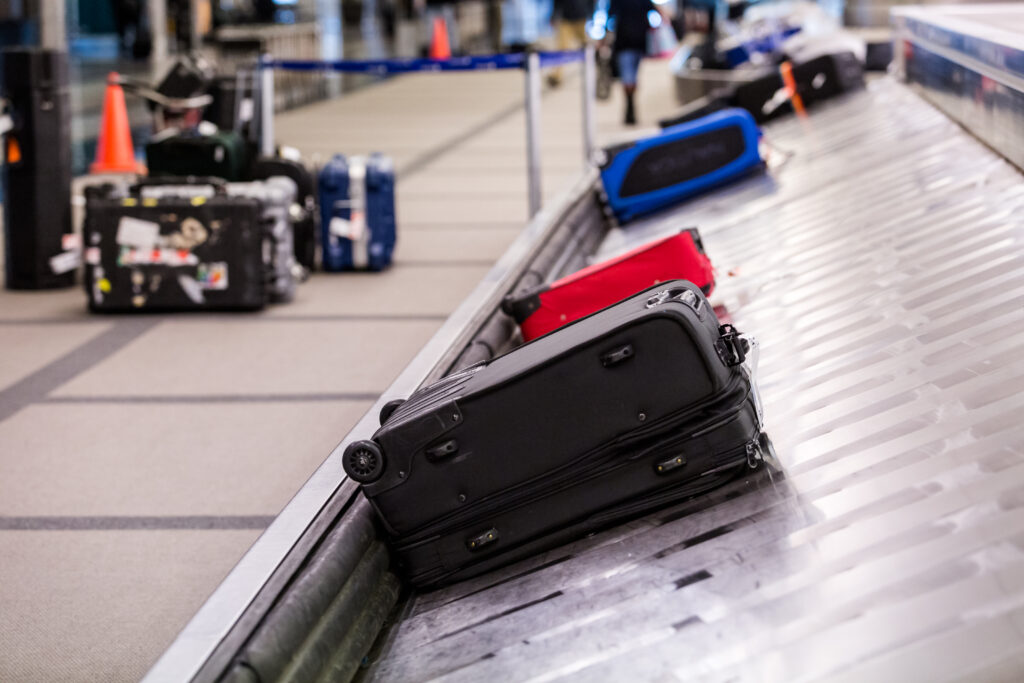
Benefits of RFID Portals for Airports, Airlines, and Passengers
Installing an RFID portal in the airport environment brings benefits that go far beyond automation. The technology directly impacts operational efficiency, baggage security, and the overall passenger experience.
By replacing manual control with automated reading and real-time tracking, airports gain speed, accuracy, and reliable data for safer decision-making.
Key Benefits for Airports
- End-to-end real-time baggage tracking, from check-in to final delivery
- Reduced losses and mishandling, with automatic alerts for errors or deviations
- Fewer human errors, as reading requires no physical contact or manual input
- Faster logistics processes, with the ability to read multiple items at once
- Audit readiness, with automated records and full movement history
Direct Benefits for Airlines
- Lower costs related to compensation and rework, thanks to traceability
- Greater operational transparency, integrating security, logistics, and service teams
- Improved brand reputation by offering a more secure, reliable service
- Compliance with safety regulations, supported by ready-to-use tracking data
Real Benefits for Passengers
- Fewer chances of lost or delayed luggage
- A more relaxed travel experience, with faster and more organized baggage handling
- Increased trust in the airline and airport, knowing bags are being tracked
- Shorter wait times at carousels, checkpoints, and customer service counters
RFID portals make baggage flows smarter and eliminate operational bottlenecks. The result is cost savings, higher confidence, and a clear competitive edge — all while improving the passenger journey from start to finish.
How Much Does It Cost to Implement an RFID Portal in Your Airport?
The cost of an RFID portal can vary significantly, depending on the project’s scale, operational complexity, and desired level of automation.
There’s no single fixed price — each airport has different layouts, baggage flows, and operational needs.
In general, the investment includes:
- RFID antennas and readers, which capture the signal from the tags
Physical structures, such as metal towers, ceiling mounts, or floor-based antennas - Software systems that process and display the data, integrated with ERP or logistics platforms
- Integration with existing systems, such as check-in, security, logistics, or CRM
- Installation, configuration, and specialized technical support
Estimated Investment Ranges
- Basic projects, with few checkpoints: R$20,000 to R$40,000
- Mid-sized projects, covering strategic areas with integrated systems: R$60,000 to R$100,000
- Complex projects, with multiple portals, sensors, and full integration: above R$150,000
More important than the price is the return. In many cases, the investment pays for itself quickly through savings from reduced mishandling, fewer claims, and less operational rework — not to mention improved passenger trust and team efficiency.
When assessing the cost of an RFID portal, consider:
- The number of bags handled daily
- Critical points in the journey prone to errors or tampering
- Existing systems that require integration
- The potential for future expansion
With the right solution, an RFID portal shifts from being a cost to becoming a strategic investment — directly impacting operational safety, performance, and reputation.
How RFID Portals Connect with the Digital Transformation of Airports
RFID portals are not just automated tag readers — they are a key part of the airport’s digital transformation journey. By converting physical movement into digital information, this technology unlocks a new level of control, visibility, and automation.
In a scenario where speed and transparency are essential, RFID helps solve one of the industry’s biggest challenges: the lack of real-time visibility over baggage, cargo, and equipment in motion.
RFID as a Driver of Airport Digitization
With RFID portals, it’s possible to:
- Automatically capture real-time data without human intervention
- Integrate information with ERP, WMS, and logistics platforms
- Create smart alerts for route deviations, suspicious activity, or delays
- Analyze movement patterns, processing times, and bottlenecks
- Generate complete reports with a click — simplifying audits and strategic decisions
This level of automation brings the airport closer to the smart airport model, where connected technologies ensure that every process is fast, traceable, and secure — fully focused on passenger experience and operational performance.
Scalability, Innovation, and Competitive Advantage
Another key advantage of RFID is its scalability. Airports can begin by automating baggage control and gradually expand the solution to:
- Track operational equipment
- Manage vehicle and personnel access
- Monitor mobile assets like trolleys, stairs, and loaders
- Control internal inventory (PPE, maintenance materials, emergency kits)
RFID also supports integration with environmental sensors, artificial intelligence, and cloud computing, opening the door to predictive analysis, risk anticipation, and data-driven decisions.
In short, an RFID portal is not an isolated tool. It’s part of a broader digital ecosystem that turns airports into smarter, faster, and more resilient environments.
Keep Exploring: More RFID and Control Solutions on Our Blog
- RFID & F1: Accelerating innovation with smart tracking
- RFID portal for vehicle authentication: Traceability and control for your operation
- What is stock inventory and why is it important?

CPCON Solutions for Airports: Technology, Integration, and Real-Time Traceability
CPCON Group delivers complete RFID portal solutions, ready to operate in airports of all sizes — with precision, safety, and speed.
Here’s what we offer:
- Tailored project design, based on your airport’s actual layout and operational flows
- Supply and installation of RFID portals, including antennas, readers, and physical structures
- System integration with existing platforms (ERP, WMS, security, check-in, etc.)
- Real-time tracking software, with movement visualization and automated reports
- Specialized technical support, from installation to optimization
- Strategic consulting, guiding implementation and future expansion
Ready to Elevate the Passenger Experience with RFID?
RFID portals are more than automated readers — they represent a shift in how airports control, track, and secure their operations.
Instead of relying on manual processes prone to error, you move toward a smarter environment with real-time visibility and trusted data.
Reducing baggage mishandling, optimizing workflows, and building passenger trust are just a few of the real benefits. With the right partner, implementation is seamless and scalable — fully aligned with your digital transformation roadmap.
The future of airport logistics is connected, intelligent, and data-driven. And it starts with choosing the right technology today.
Want to bring full control and visibility to your airport operations?
Talk to CPCON Group and discover how our RFID portal solutions can reduce baggage mishandling, improve security, and streamline your logistics — all with data you can trust.
FAQ
What is an RFID portal and how does it work in airports?
An RFID portal is a fixed structure with antennas and readers that automatically identifies luggage or equipment as it passes through. It captures data in real time without the need for scanning or physical contact, making baggage tracking faster and more accurate.
How does RFID help reduce lost or mishandled luggage?
RFID tracks every movement of a bag throughout its journey — from check-in to arrival. If a bag deviates from its expected path, the system detects it immediately and sends an alert, preventing losses and delays.
Can RFID portals be integrated with existing airport systems?
Yes. RFID solutions from CPCON Group are designed to integrate seamlessly with ERP, WMS, check-in, security, and logistics platforms, ensuring centralized data and operational continuity.
What are the main advantages of RFID portals for airports and airlines?
Airports gain real-time visibility, faster baggage handling, and fewer operational errors. Airlines benefit from reduced compensation costs, better compliance, and improved customer trust — all thanks to accurate and automated control.
How can CPCON Group support RFID implementation in my airport?
CPCON provides a complete solution: custom project design, equipment supply, installation, integration, training, and ongoing support. We ensure that your RFID portal delivers results from day one.

